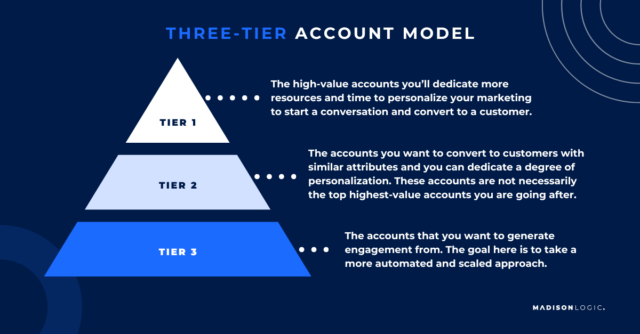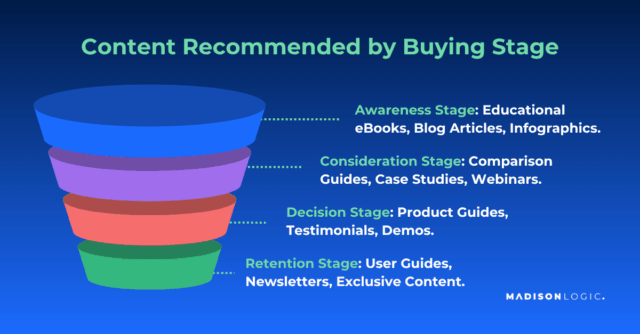For years, the best account-based marketing (ABM) campaigns have been defined by precision, personalization, and persistence—often powered by human touchpoints and tightly coordinated sales and marketing motions. But 2025 is changing the rules. The explosion of artificial intelligence (AI) identity-based targeting, and channel innovation, makes programmatic advertising not just relevant to ABM, but essential to its evolution.
Here’s the tension: ABM marketers are used to hand-selecting accounts and crafting personalized experiences, while programmatic is historically associated with broad, spray-and-pray campaigns. But that’s an outdated view. Today’s programmatic tools can match the granularity, nuance, and timing ABM demands—across every screen, speaker, and surface your buying committee touches.
The result? A new kind of ABM motion. One that uses AI to detect intent, data to guide placement, and a multi–channel strategy to reinforce influence where it matters most. Whether you’re targeting a CFO on her Peloton watching connected TV (CTV), a VP streaming a podcast, or a buying group deep in research mode, you now have the tools to be everywhere—precisely.
This article unpacks five programmatic advertising trends you can’t afford to ignore—and how to activate them as part of a cohesive, high-performance campaign strategy.
Trend #1: AI-Powered Predictive Targeting
AI is rapidly rewriting the rules of B2B marketing, replacing static segments and gut instincts with predictive precision. Powered by real-time analysis of behavioral, contextual, and firmographic data, AI-driven algorithms are now at the core of programmatic platforms, forecasting which decision-makers are most likely to engage—before they even raise their hands.
Why It Matters in Programmatic
Traditional programmatic advertising has relied heavily on static audience segments and cookie-based identifiers—methods that are increasingly less efficient in today’s privacy-conscious, fast-moving digital landscape. AI is redefining this space with models that can dynamically predict intent and engagement, even in cookieless future environments.
AI uses techniques like probabilistic matching, contextual analysis, and natural language processing to find and engage the right audiences—without relying on personal data. It looks at patterns in online behavior, the type of content people consume, and the language used across websites to predict who’s most likely to engage. This allows you to deliver highly relevant ads in real time, in a way that’s both precise and privacy friendly.
Why It Matters for ABM
ABM depends on engaging the right stakeholders at exactly the right time. But uncovering those moments manually is time-consuming. Predictive AI surfaces intent signals like surging interest through more engagement, competitor research activity, or new buying group dynamics across target accounts. These insights, once buried in weeks of research, are now automated and actionable, giving marketers a critical edge in timing, personalization, and scale.
Tactical ABM Tips to Implement AI
1. Build a Tiered Surge Model
Use predictive AI to identify and prioritize your top-tier accounts from your target account list—those most likely to engage right now. Focus your programmatic ad spend on these Tier 1 accounts, especially when AI detects a surge in topics related to your product or service. Building this awareness between your high-priority accounts and what their interests are helps you invest your ad spend where it counts most.

2. Sync with Sales Intelligence Tools
Integrate AI-driven ad signals with your sales intelligence platforms to get a complete picture of engagement. Cross-referencing ad interactions with website visits and intent data helps you validate which accounts are heating up and ready for outreach.
3. Trigger Ad Variants by Buying Stage
Leverage AI insights to customize your ad creative based on where prospects are in their buying journey. For example, deliver educational content for early-stage buyers and comparison-focused messaging for those closer to making a decision. This tailored approach improves your messaging’s relevance across the buying committee, which increases the likelihood of conversion.

Trend #2: Connected TV (CTV) as a Programmatic Channel
Connected TV (CTV) has evolved into a highly effective programmatic channel that goes beyond brand awareness to actively engage prospects throughout the buying process. With enhanced targeting capabilities on streaming platforms, a CTV marketing strategy delivers precise, measurable reach that turns premium streaming environments into impactful touchpoints.
Why It Matters in Programmatic
CTV uniquely bridges the gap between broad audience reach and precise targeting. CTV allows you to engage viewers in a distraction-free, immersive environment where they’re highly attentive. But what really sets CTV apart is its ability to tie those ad exposures back to specific business accounts through device graphing and cross-device data.
As prospects watch programs from their homes on smart TVs, you can attribute ad impressions and engagement to the right companies. This level of traceability turns CTV from a simple branding tool into a measurable, accountable channel that directly supports your programmatic goals. You’re no longer just reaching an audience; you’re reaching the right accounts with the right message exactly where they are (especially away from their computer screens). You can then analyze your CTV campaign data for better-informed insights that lead to both campaign optimization and proper budget allocation for campaigns that are showing results.
Why It Matters in ABM
For marketers focused on ABM, CTV is a critical channel to maintain influence and engagement across the entire account ecosystem. ABM thrives on influencing multiple decision-makers and stakeholders within a target account versus chasing an individual lead.
CTV offers a powerful way to extend your reach across buying committees by placing your message in trusted, premium streaming environments that your prospects regularly consume. Repeated exposure to your messaging creates a “halo effect.” Instead of interruptive or pushy messaging, your brand subtly but consistently reinforces its value across different members of the buying group, building familiarity and trust over time. This persistent presence keeps your company top of mind, smoothing the path for sales conversations and accelerating decision-making.
Tactical ABM Tips to Leverage CTV
1. Run Account-Triggered CTV Campaigns
Timing is everything in ABM. Use predictive AI and data to identify when your highest-value accounts are showing increased interest or activity. Triggering CTV ads at these key moments ensures your message reaches engaged prospects when they’re most receptive. This precision targeting maximizes your programmatic spend by focusing on accounts with the greatest potential to convert, rather than broad or untargeted audiences.
2. Pair with Retargeting & Email
Think of CTV as your brand’s initial handshake: broad enough to create awareness but compelling enough to capture attention. After priming your audience with impactful streaming ads, follow up using more personalized channels like display advertising, LinkedIn, or email. These channels allow you to deliver tailored messages and offers that speak directly to individual stakeholders, moving them further down the buying journey and driving measurable conversions.
3. Use Video Ad Serving Template (VAST) Tags Across Channels
Consistency is key to building trust and recognition. VAST tags are a standardized code format that allows your video ads to be served and tracked across different platforms and devices seamlessly. By using VAST tags, you can easily repurpose your CTV video ads in other digital channels—such as YouTube pre-rolls, native advertising, and in-app placements—while capturing important data like impressions, clicks, and video completion rates. This unified brand to demand strategy ensures your audience receives a unified message wherever they engage with your brand, reinforcing your presence and boosting overall campaign effectiveness.
Trend #3: Cookieless Targeting and First-Party Data Enrichment
Third-party cookies are moving toward restrictions rather than full deprecation, as noted by Google’s Privacy Sandbox. Yet Privacy Sandbox still encourages the push toward smarter, privacy-safe targeting that puts the user in charge of their web. With the right data by your side, you can still reach the right audiences by leaning into a cookieless future with targeting methods that rely on contextual signals, first-party data, and AI-driven tools that give you more control and flexibility with your programmatic strategy.
Why It Matters in Programmatic
As dependency on third-party cookies lessens, programmatic targeting will evolve to cookieless targeting. To keep reaching the right people at scale, you’ll need to tap into privacy-safe alternatives like publishers’ first-party data, identity graphs, and contextual machine learning. First-party data offers consent-based targeting, identity graphs help connect users across devices, and contextual models analyze on-page content to match ads with relevant environments. Embracing these tools now ensures your programmatic strategy stays precise and future-proof if third-party cookies actually disappear or continue to exist with restrictions.
Why It Matters for ABM
In ABM, losing third-party data doesn’t mean losing insight—it means rethinking where your best data comes from. Account-based marketing strategies depend on understanding firmographics (like company size, industry, revenue) and behaviors (like content engagement or site visits). Without cookies, the most reliable source becomes your own first-party data—enriched through customer relationship management (CRM) systems, site activity, and marketing automation platforms (MAPs). Connecting that data to your ad tech stack is key to continuing highly targeted, personalized outreach that resonates with real decision-makers.
Tactical ABM Tips for a Post-Cookie World
1. Leverage Clean Rooms
Use privacy-safe environments (clean rooms) to match your first-party data (like CRM records or lead lists) with publisher or platform audiences without exposing sensitive information. Clean rooms, powered by technologies like encrypted ID matching, allow both parties to compare and align datasets without directly sharing personally identifiable information (PII). By encrypting and anonymizing data before it’s matched, you ensure that individual user identities are protected, helping you stay compliant with evolving data privacy regulations like GDPR and CCPA. Clean rooms make it possible to safely reach high-value accounts across premium inventory, while maintaining the trust of your audience and the integrity of your data practices.
2. Invest in Data Unification
Bring together CRM records, marketing automation data, and website behavior into one unified view of each account. This consolidated profile helps you build smarter retargeting audiences, identify lookalike accounts, and time outreach based on meaningful engagement signals. It also improves marketing and sales alignment by ensuring everyone is acting on the same level of insights through the removal of data silos. Bring this data into sales and customer success collaboration sessions to give your accounts a unified, relevant experience even after the deal closes.
3. Pair Contextual with Intent Data
Just because cookies may go away doesn’t mean targeting disappears. Combine contextual advertising (serving ads on relevant content pages) with real-time intent data to zero in on high-interest topics. For example, place ads on pages featuring product comparisons or industry trend articles when those topics align with buyer signals. This ensures your ads remain relevant and timely—without relying on personal identifiers.
Trend #4: Creative Versioning at Scale with Dynamic Creative Optimization
Dynamic creative optimization (DCO) is a way to automatically change ad elements like headlines, images, or CTAs in real time based on who’s seeing the ad. Whether it’s a tech buyer at a mid-size company or a CMO in the finance industry, DCO makes it possible to show more relevant messages without having to manually build dozens of ad versions.
Why It Matters in Programmatic
Programmatic advertising isn’t just about automated placement anymore—it’s also about automated creative. With DCO, you can move beyond static banner sets and serve ads that adjust themselves based on real-time data like location, industry, job function, or even past engagement. That means more relevant experiences, better performance, and less manual work for your team.
Why It Matters for ABM
ABM success hinges on delivering the right message to the right people inside target accounts. But consistency at scale is tough—especially when different buyer personas and industries require different value propositions. DCO gives marketers a scalable way to personalize ads without building out endless creative sets manually. It helps maintain relevance across buying groups while keeping your creative production lean and efficient.
Tactical ABM Tips for DCO
1. Segment by Industry & Persona
Start by mapping out your most common personas and industries. Then build modular creative elements like copy blocks that address industry-specific challenges or visuals that resonate with particular roles. These elements can be dynamically assembled to create hyper-relevant ads based on each viewer’s profile.
2. Test and Refine Creative Logic
Use DCO platforms that let you set rules like, “If persona = IT decision-maker AND industry = healthcare, then show this headline and image.” Logic-based rules help you control which ad versions are served to which audience combinations, and you can test and optimize them over time to improve results.
3. Align Creative with Sales Messaging
You need to create a seamless experience across digital ads and direct outreach to reinforce your message and increase credibility. Coordinate closely with your sales team to align DCO-driven ad messaging with what your sales development representatives (SDRs) or account executives (AEs) are saying in emails and calls. For example, if a sales conversation for a similar account led with a security pain point for finance buyers, make sure your ad copy reflects that too.
Trend #5: Real-Time Bidding in Audio & Digital Out-of-Home (DOOH)
Programmatic advertising isn’t just for banners and social feeds anymore. It now includes digital audio (like ads on streaming audio services like Spotify or podcasts) and digital billboards, also known as DOOH (digital out-of-home), which can be placed programmatically on screens in places like airports, elevators, and city centers. These channels make it possible to deliver account-specific messaging in physical and auditory environments, expanding your ABM reach beyond traditional screens.
Why It Matters in Programmatic
Audio and DOOH open high-impact inventory during moments when your audience is more focused—like commuting, walking through a lobby, or waiting at an airport. These formats are immersive and less cluttered than typical online environments, which helps your message stand out. They also let you connect with prospects in places where attention is naturally high, but digital saturation is low.
Why It Matters for ABM
ABM isn’t about just one interaction—it’s about sustained influence across multiple touchpoints. Programmatic audio and DOOH give you additional surfaces to reinforce your message, especially in hybrid or field-heavy go-to-market motions. When prospects are away from their desks, these formats can help maintain brand presence, extend campaign reach, and support mid-funnel momentum. Plus, they’re ideal for reaching stakeholders who are otherwise hard to engage online.
Tactical ABM Tips for Programmatic Audio & DOOH
1. Use DOOH Around Geo-Fenced Events
If your target accounts are attending a major conference or headquartered in a key metro area, launch DOOH campaigns in those areas. You can serve tailored ads on digital billboards near convention centers, offices, or hotels to stay visible throughout their day.
2.Add Branded Audio to Multi-Channel Plays
Incorporate audio ads into your ABM strategy to reach executive buyers during commute times or focused listening sessions. Whether through podcasts or streaming platforms, audio advertising can echo your core value propositions and subtly reinforce your message in a channel that feels personal and distraction-free.
3. Measure Holistically Across the Funnel
Audio and DOOH may not drive direct clicks, but they influence behavior. Make sure to integrate these channels into your attribution model or multi-touch reporting. Track downstream engagement (website visits, form fills, and sales conversations) to measure the broader halo effect and justify the investment.
Enhance Your ABM Campaign’s Scalability with Programmatic Ads and Madison Logic
These five trends mark a broader shift in how marketers need to approach ABM campaigns. In a landscape defined by fragmented channels, limited attention, and stricter privacy standards, programmatic advertising offers a key advantage: the ability to scale efficiently while maintaining personalization, precision, and control.
In terms of what programmatic advertising brings to ABM campaigns, three things are true:
- Programmatic doesn’t eliminate tailored messaging; it enables its delivery across more channels and accounts.
- Programmatic doesn’t sacrifice quality for reach; it enforces parameters that support both.
- Programmatic doesn’t replace strategic thinking; it enhances it through automation and real-time optimization.
As marketing becomes more integrated and data more actionable, advanced ABM teams will adopt programmatic as a core component of their multi-channel strategy—not a secondary tactic.
With solutions such as ABM Audio Advertising, ABM Connected TV, and ABM Display Advertising, Madison Logic enables B2B marketers to run intent-based programmatic campaigns across all stages of the buyer’s journey. Marketers can target key stakeholders with display ads during the research phase, reinforce messaging through connected TV during off-hours, and deliver relevant audio content during commutes—all through a single, integrated platform aligned to their priority accounts.
ABM isn’t shrinking to fit old frameworks; it’s expanding. Programmatic is your multiplier. And if you’re serious about staying competitive in 2025 and beyond, the time to experiment isn’t later—it’s now.
Scale Smarter with Madison Logic: How Akamai Transformed Its ABM Strategy
As modern ABM evolves, forward-looking teams are embracing programmatic as the foundation of their multi-channel strategies. That’s exactly what Akamai Technologies achieved by partnering with Madison Logic.
Max Kaskons, Senior Digital Marketing Program Manager at Akamai, used Madison Logic to overcome longer buying cycles and increasingly complex buying committees. With access to ML Insights and a unified programmatic platform, Max aligned marketing and sales, activated high-impact campaigns across channels, and delivered personalized content to buying groups based on where they were in the journey.
The result? Stronger engagement, smarter targeting, and measurable results across the funnel—all with the support of a partner invested in long-term success.
Contact us to tell us more about your target accounts, goals, and strategy—we’ll help you take your ABM to the next level.




















